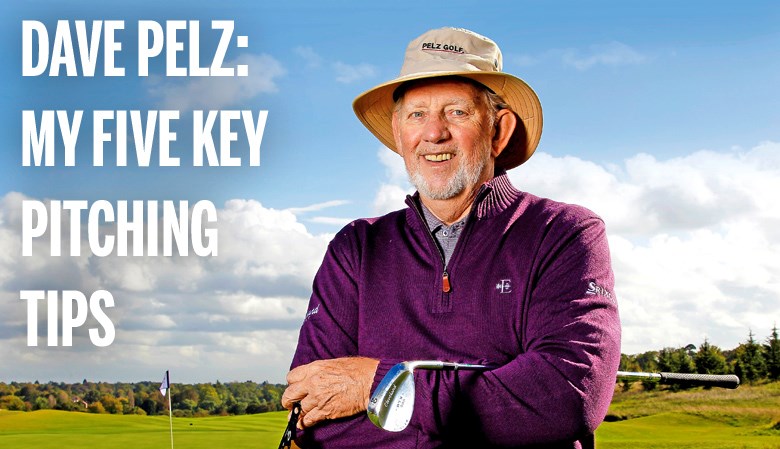Dave Pelz’s five key tips to pitching it close
Last updated:
|
I am a great fan of statistics and they show that most amateurs devote no more than three per cent of their practice time to chipping and pitching. Why is that? Are you all mad? On average, two thirds of golf is played after the first two shots. Statistics also show the highest percentage error of any shot in golf is the 40-yard pitch. Most people get that more wrong than any drive or any putt. I’ve seen people make birdies after poor drives, but you hardly ever see anyone make a par after a bad chip, let alone a birdie. This article will give you the keys that can transform your short game, but before we start, let me just underline something about keys. A key by itself isn’t much good to anyone; you need a door and a lock, and you need to know which way to turn it. What I’m saying here is that there’s a bit of work involved. But if you put the time in on the practice ground then you’re going to improve your scores at a rate you might not even believe. |
|
|
The centre of the stance should be determined by your heels and not by your toes. I’ve placed a club on the ground (below) to show you what I mean. A lot of players move the ball too far forwards because, when you splay out your left foot (right-handers), it looks as though the ball has moved back. Try not to let this happen because when the ball is forward, it’s very easy to hit the ground behind it. Further back is OK, but not ideal. The centre of your stance is not halfway between your toes, because your feet are almost always angled in or out to some extent (above). You can get away with moving the ball back in the stance a bit – the shot would just be a little lower than normal. But moving the ball forward is asking for fat shots. Centred ball, open stance |
|
|
Consistency of strike is all-important if you are going to build a better short game, so I want you to pretend that your elbows have been sewn to your sides. The chipping and pitching motion is a body turn and not one governed by the arms alone. Tuck your elbows into your sides and rock back and forth as though you might be holding a baby. Try it without a club first, just to get the right feeling, and then add a wedge. Lock your hands in |
|
|
So much about the short game is different to the long game, but the cocking of the wrists is the same for pitching. If you lift the club from the address position as I’m doing here (below left) then you are cocking the wrists correctly. The cocking of the wrists is up against the thumbs, not hinging back or through, and it should occur gradually through the backswing. Begin your wrist cock as soon as you start your takeaway; accomplish the full wrist cock gradually until you reach the end of your backswing. During your throughswing, keep everything synchronised as you swing through the ball. The smooth acceleration will help keep your swing stable through the shot. Activate the bounce |
|
|
For the basic pitch and chip shot, you do need to release the club naturally, allowing the toe to overtake the heel as you would with a much longer iron shot. You can see below how the toe is now pointing to the sky. There are those who believe that the face must remain square after impact to increase spin, but I’ve never been an advocate of that theory. You see lots of pros zipping the ball back on the green when they’ve allowed the head to close naturally. Let the toe rotate |
|
|
In the long game, your misses tend to be left and right. But in the short game it’s usually long or short. Distance control in the short game is very important. My recommendation is to get four wedges (although Phil Mickelson sometimes carries five) and work on three repeatable swing lengths. Use your left or lead arm as a reference, picturing it on a clockface. On the first length, take the club back to 7.30, then 9.00 and, lastly 10.30. You don’t need to go any further than that. Learn to play these three pitch shots using a consistent rhythm and then build your own chart as I have done here. These are my yardages, not yours, so go out and measure how far you hit the ball with each swing and each club. Once you have this framework, you can feel confident of knocking it close. The short game is the opposite of the long one. In the long game you can hit compact punchy shots with a long backswing and a short follow through. In the short game, you keep it short going back and long to a high finish. Clubhead speed is important around the green; there’s no room for deceleration. |
|

